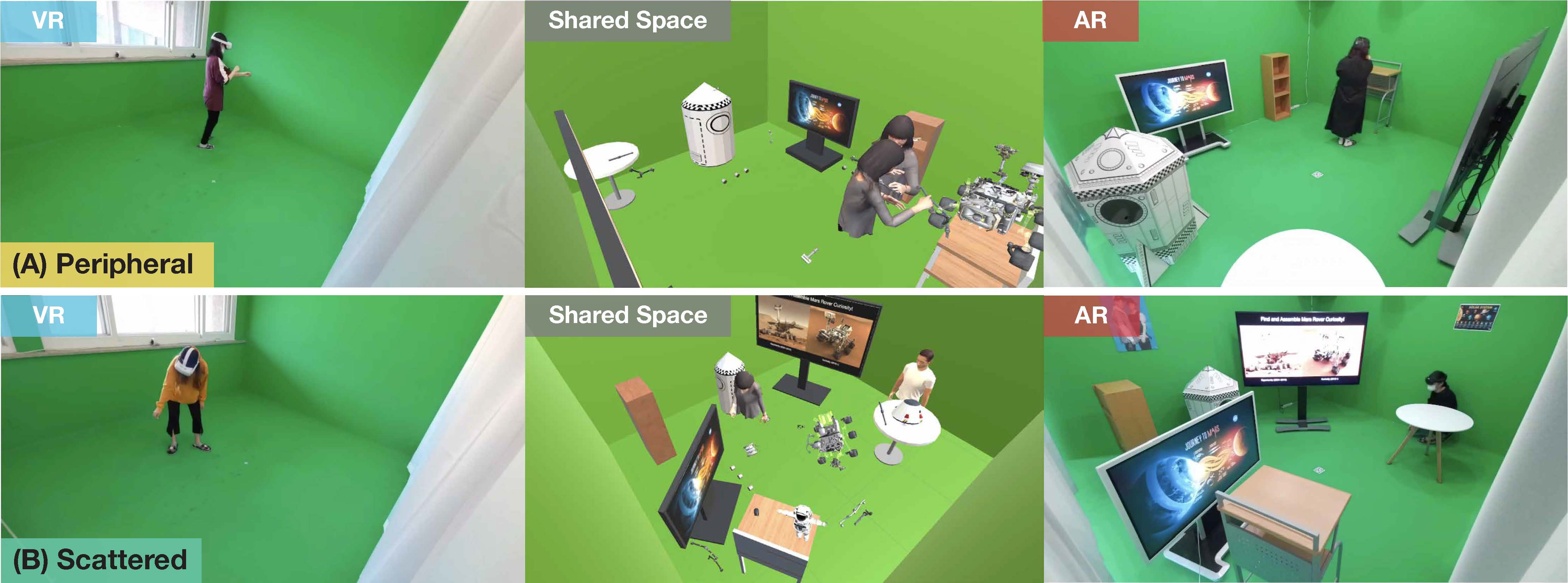The Effects of Device and Spatial Layout on Social Presence During a Dynamic Remote Collaboration Task in Mixed Reality
Published in 2022 IEEE International Symposium on Mixed and Augmented Reality (ISMAR), 2022
Authors: Jae-eun Shin, Boram Yoon, Dooyoung Kim, Hyung-il Kim, Woontack Woo

Abstract: This paper evaluates factors of social presence during a dynamic remote collaboration task in a technologically asymmetric Mixed Reality (MR) setting for two spatial layouts. While active movement during MR remote collaboration is afforded by how the shared 3D space is mediated and configured, studies investigating the impact of these conditions on user experience have been scarce. In a between-group study (n=48), a host user in Augmented Reality (AR) and a remote user in Virtual Reality (VR), both wearing Head Mounted Displays (HMDs), simultaneously moved around the shared space to find and assemble parts of a Mars exploration rover together, one group in a Peripheral layout and the other in a Scattered layout with disparate levels of spatial affordance. Results show that while VR facilitates higher co-presence and spatial presence than AR through HMDs, the Peripheral layout enables users to pay more attention to one another than the Scattered. We analyze the results and derive implications aimed at bridging the AR-VR gap in social presence for dynamic MR remote collaboration through the adaptive placement of virtual content in shared spaces.
Jae-eun Shin, Boram Yoon, Dooyoung Kim, Hyung-il Kim, Woontack Woo, “The Effects of Device and Spatial Layout on Social Presence During a Dynamic Remote Collaboration Task in Mixed Reality,” 2022 IEEE International Symposium on Mixed and Augmented Reality (ISMAR), 2022, pp. 394-403, doi: 10.1109/ISMAR55827.2022.00055
